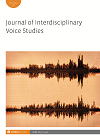
Full text loading...

Human–computer interaction will soon be framed as a dialogue in-between two agents, rather than the imposition of the needs and desires of the human entity over the inert machine. As the latter become seemingly more intelligent, we will witness how they reshape art, knowledge and society in general even more in the not-so-distant future. In this framework, decolonization of their algorithms becomes imperative so as not to reproduce the ethnic and cultural biases that prevail in contemporary human society. By using a pre-trained transformer-based language model (GPT-2) (Radford et al. 2019a), retrained with poetry in Spanish, fine-tuned on examples of South American poetry recited by two different text-to-speech synthesis systems – the Tacotron 2 (Radford et al. 2019b) + Waveglow (Prenger et al. 2018) – coupled posteriorly using the ESPnet-TTS toolkit (Hayashi et al. 2020), trained on an Argentinean voice dataset fine-tuned on voice snippets of Peruvian poet Jorge Eduardo Eielson, I came up with a selection of spoken-word poems in a distinctly Latin American voice that ended up presented as the El Tiempo del Hombre (‘The Time of Man’) album, printed on a set of four 7-inch lathe-cut stereo vinyl discs. This process turns into a self-reflecting gesture when the dataset used for training is based on South American Artistic Traditions of both the present and the past.

Article metrics loading...

Full text loading...
References


Data & Media loading...

Publication Date:
https://doi.org/10.1386/jivs_00052_1 Published content will be available immediately after check-out or when it is released in case of a pre-order. Please make sure to be logged in to see all available purchase options.